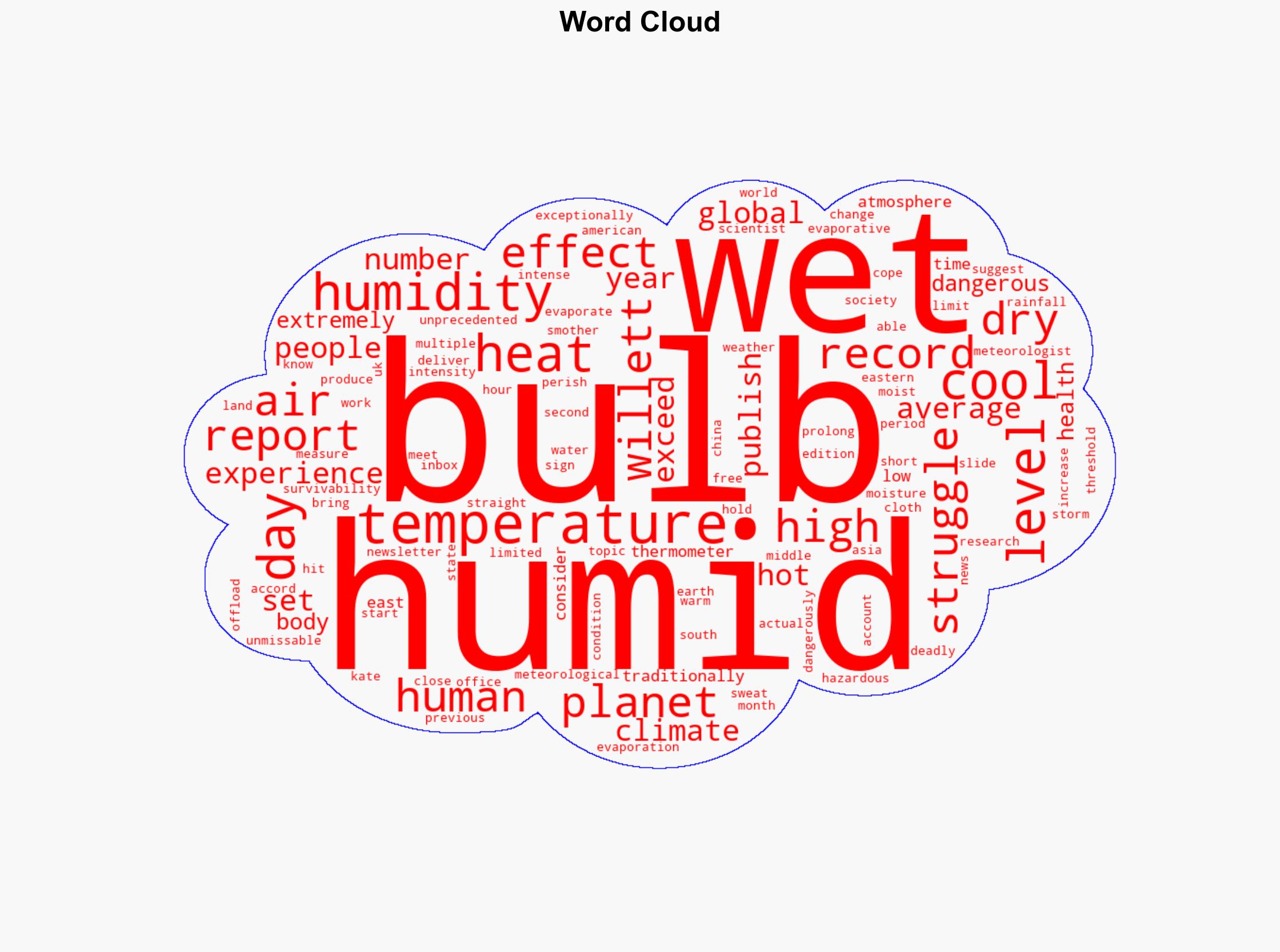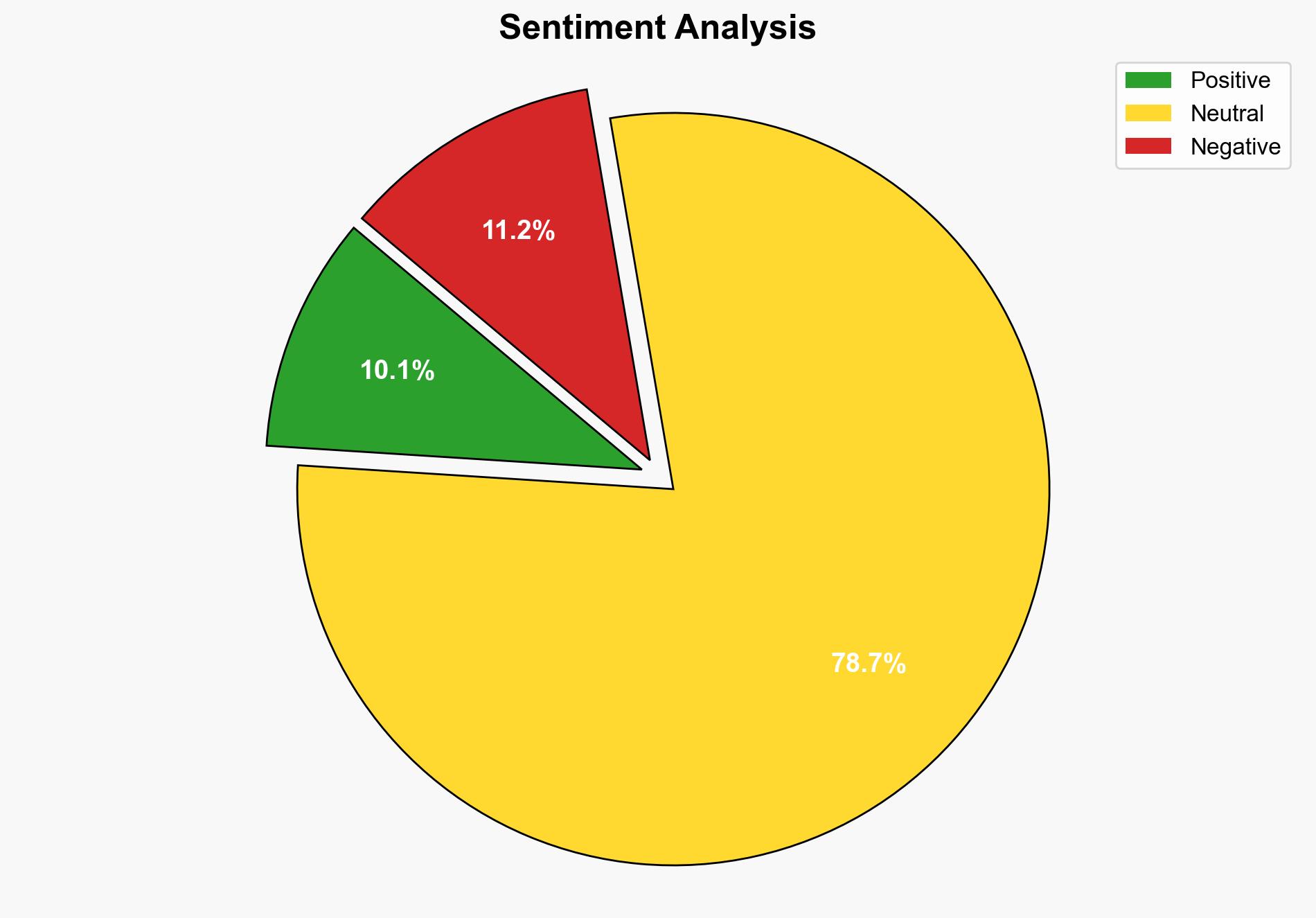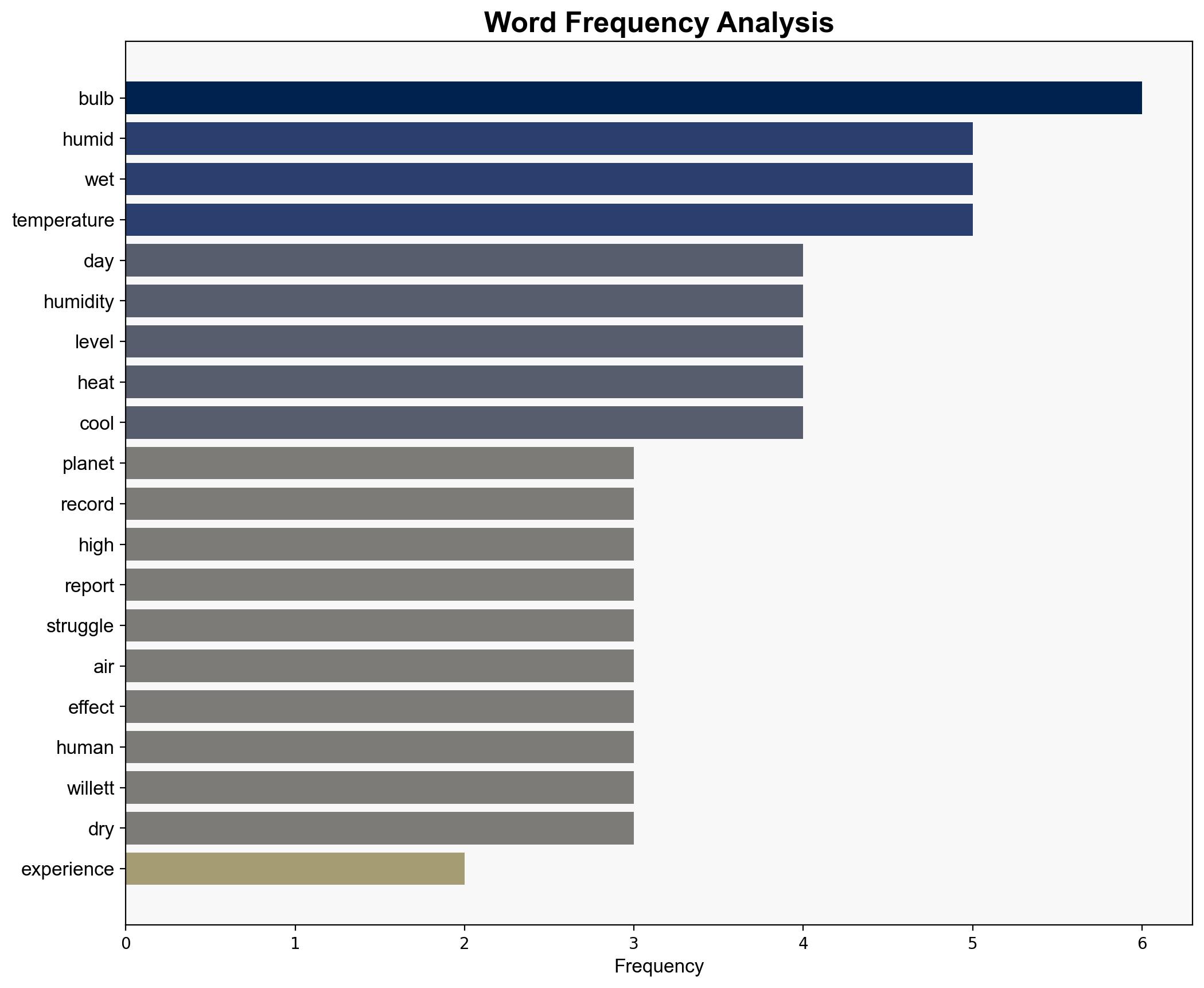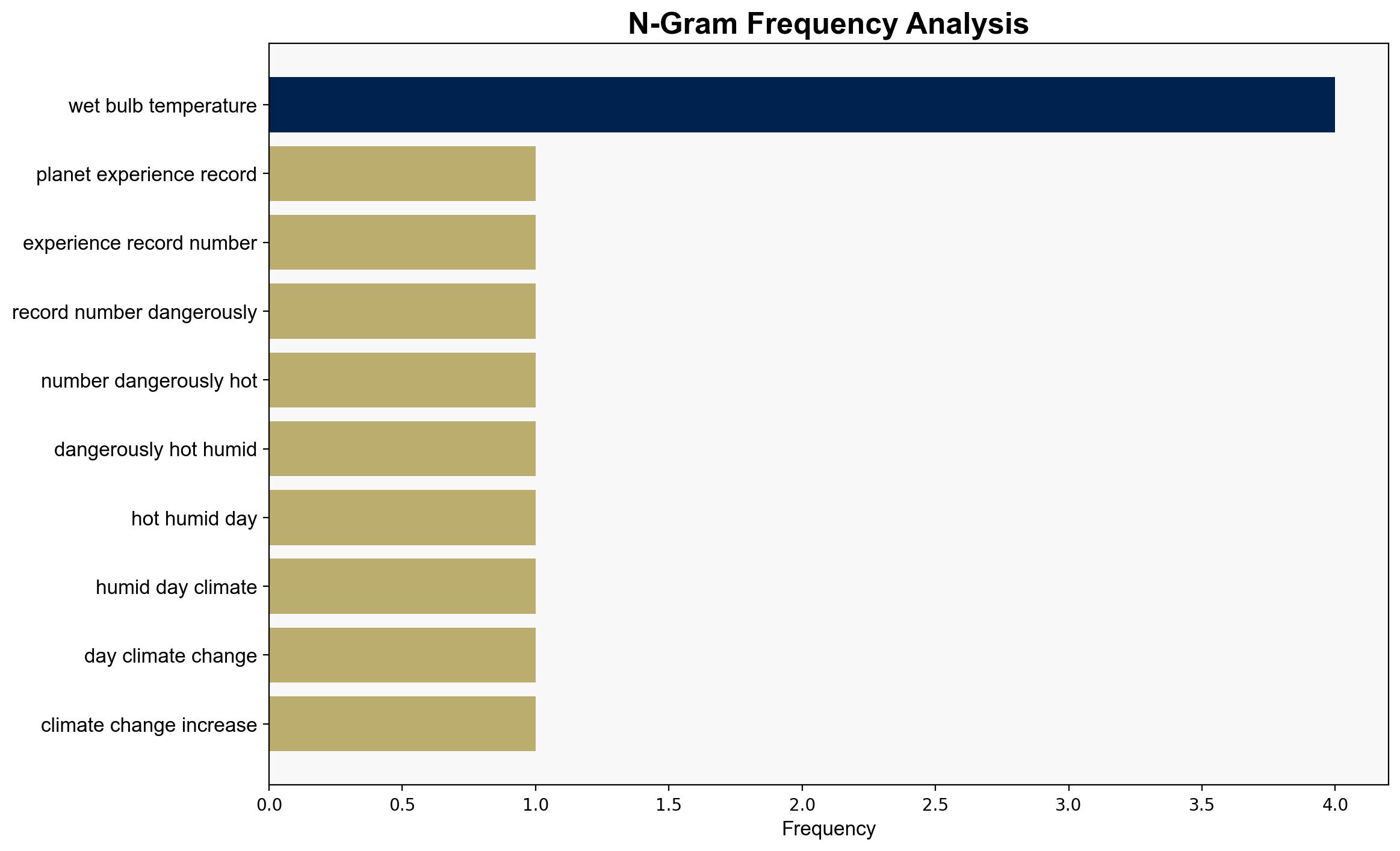2024 saw a record-breaking number of dangerously hot and humid days – New Scientist
Published on: 2025-08-14
Intelligence Report: 2024 saw a record-breaking number of dangerously hot and humid days – New Scientist
1. BLUF (Bottom Line Up Front)
The analysis indicates a high confidence level that climate change is significantly contributing to increased global humidity and dangerously hot days, posing severe risks to human health. The most supported hypothesis is that these conditions are a direct result of anthropogenic climate change, necessitating urgent international policy action to mitigate further environmental and health impacts.
2. Competing Hypotheses
– **Hypothesis 1**: The increase in dangerously hot and humid days is primarily due to anthropogenic climate change, driven by increased greenhouse gas emissions and resulting in higher global temperatures and humidity levels.
– **Hypothesis 2**: The observed climatic changes are part of a natural climate variability cycle, with human influence being minimal or secondary to natural processes.
Using the Analysis of Competing Hypotheses (ACH) 2.0, Hypothesis 1 is better supported by the data, including the unprecedented levels of global humidity and the correlation with increased greenhouse gas emissions. Hypothesis 2 lacks substantial evidence and fails to account for the rapid pace of change observed.
3. Key Assumptions and Red Flags
– **Assumptions**: Hypothesis 1 assumes that current climate models accurately predict the impact of greenhouse gases on global temperatures and humidity. Hypothesis 2 assumes that historical climate patterns can explain current changes without significant human influence.
– **Red Flags**: Potential underestimation of the lower threshold for human survivability in extreme heat and humidity conditions. Lack of comprehensive data on regional variations in climate impact.
4. Implications and Strategic Risks
The increase in dangerously hot and humid days poses significant risks to public health, agriculture, and infrastructure. Economically, regions heavily reliant on agriculture may face reduced productivity. Geopolitically, resource scarcity could exacerbate tensions, particularly in already volatile regions. Psychologically, populations may experience increased stress and migration pressures.
5. Recommendations and Outlook
- Immediate international collaboration to reduce greenhouse gas emissions and implement adaptive measures for vulnerable populations.
- Develop and deploy early warning systems for extreme weather events.
- Scenario-based projections:
- Best Case: Global emissions are significantly reduced, stabilizing climate patterns and reducing extreme weather events.
- Worst Case: Continued emissions lead to more frequent and severe climatic events, overwhelming adaptive capacities.
- Most Likely: Incremental improvements in emissions reduction with ongoing challenges in managing climate impacts.
6. Key Individuals and Entities
Kate Willett, involved in climate reporting and analysis, provides insight into the health impacts of extreme heat and humidity.
7. Thematic Tags
national security threats, climate change, public health, international policy, environmental sustainability





